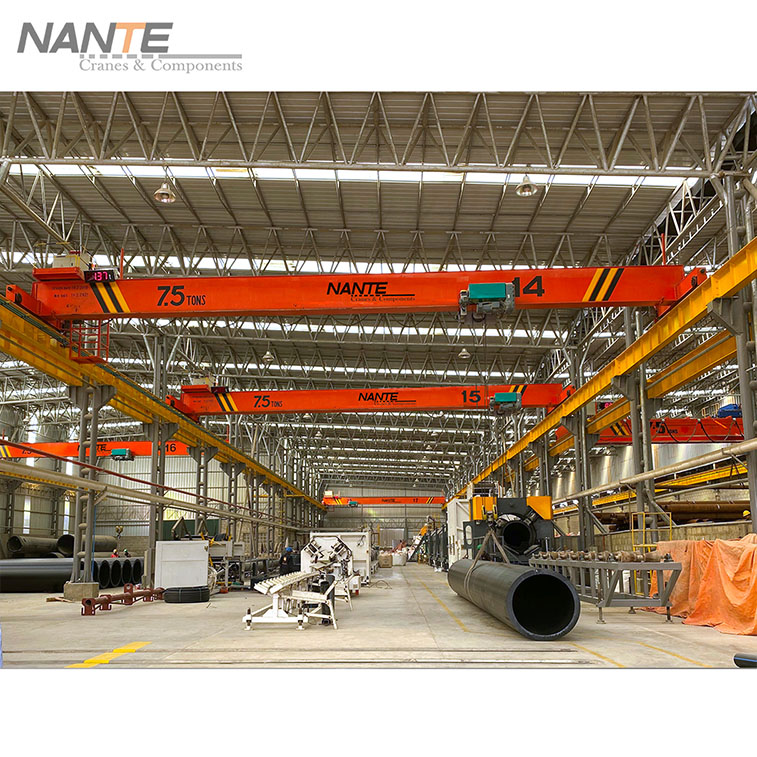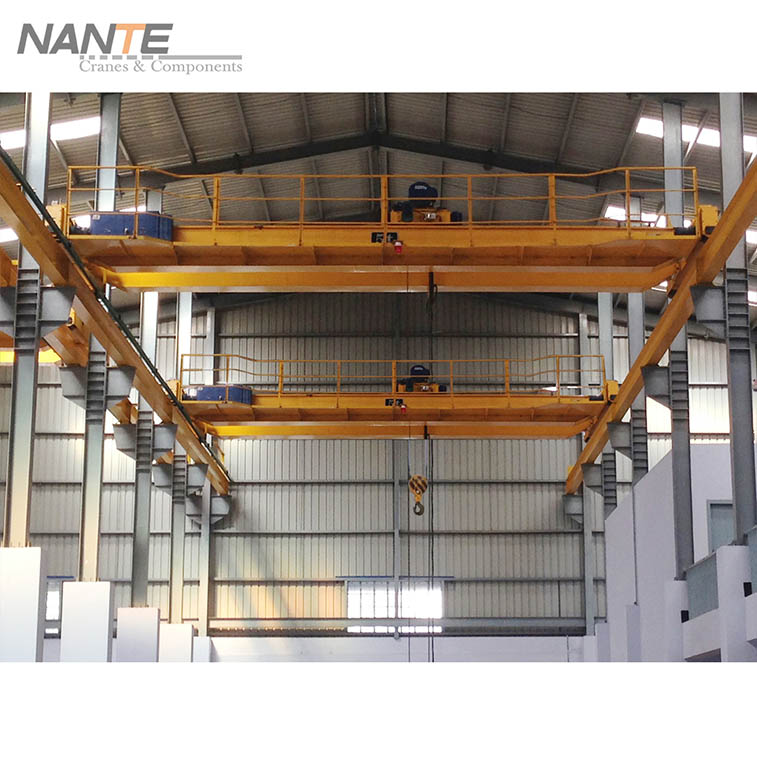What Are the Main Types of Overhead Crane?
Date: 2024-01-26 Share:
The usage characteristics of overhead cranes

Overhead crane is a lifting equipment that is horizontally mounted over workshops, warehouses, and material yards for material lifting. Due to its two ends located on tall cement columns or metal supports, it resembles a bridge in shape.
The bridge of the overhead crane runs longitudinally along the tracks laid on both sides of the elevated structure, making full use of the space under the bridge to lift materials without being obstructed by ground equipment.
Overhead crane is the most widely used and numerous type of lifting machinery. The bridge of the overhead crane runs longitudinally along the tracks laid on both sides of the elevated structure, while the lifting trolley runs horizontally along the tracks laid on the bridge, forming a rectangular working range.This allows the space under the bridge to be fully utilised for lifting materials without being hindered by ground level equipment.
This type of crane is widely used in indoor and outdoor warehouses, factories, docks, and open-air storage yards.
Overhead Crane Types
Single–Girder VS. Double-Girder Overhead Crane
Overhead cranes can be divided into single-girder and double-girder overhead cranes according to their major categories. What are the specific differences between a single-girder overhead crane and a double-girder overhead crane, apart from the commonly known difference between single and double-girders? Let’s take a look together:

Structure
Generally, single-girder overhead cranes have a relatively simple structure and light weight, making installation, daily use, and disassembly relatively simple. However, the structure of the double-girder overhead crane is relatively complex, with a large weight, and it is relatively complex in installation, daily maintenance, and repair.
Production cost
Single-girder overhead cranes have a shorter span and consume less construction materials, resulting in lower costs. The double-girder overhead crane has a larger span, more consumables, and higher technical content, so the production cost is higher.
Operation method
In terms of operation mode, single-girder cranes are generally operated on the ground and can be operated through two methods: handle and remote control, while double-girder overhead cranes require workers to control during operation.
Mechanical performance
In terms of mechanical performance, the stability of single-girder overhead cranes is relatively low, the rated lifting capacity is relatively small, and the level of operation is relatively low. The double-girder overhead crane has relatively high stability, rated lifting capacity, and working level.
Working environment
Generally, single-girder overhead cranes are suitable for workplaces with short spans, relatively light lifting capacity, and relatively small construction site space. The double-girder overhead crane is suitable for sites with longer spans, relatively heavy lifting capacity, and wider construction site space.
Top running VS Under–hung Overhead Crane
The design of a under-hung overhead Crane has flexibility and functionality. The top running crane is designed to lift huge loads, while the under-hung overhead crane provides a form of power.
The under-hung overhead crane can be directly suspended on the overhead building structure without the need for interfering support columns. This is because the under-hung system is usually much lighter than the top running system.
For systems with under-hung overhead crane, the end truck runs on the lower flange of the runway beam. These girders form the runway of the crane. For the top running system, the end truck is supported by tracks, which are connected to the top of the crane runway.
How To Choose The Right Overhead Crane
Overhead crane is an important lifting equipment widely used in industries such as construction, manufacturing, and transportation. Choosing a suitable overhead crane is of great significance, and the following are the requirements for selecting a overhead crane.
Load capacity
The load capacity of overhead cranes is a very important indicator, and it should be determined according to the actual needs of the workplace to avoid accidents during use. In addition, additional loads that may exist in daily use, such as strong winds, earthquakes, etc., should be considered.
Working speed
The working speed of overhead cranes is also an important indicator. When choosing a overhead crane, it is necessary to consider the working speed based on actual needs and budget cost factors. If a large amount of work needs to be completed quickly, a high-speed crane should be chosen. If more precise operation is required, a low-speed crane should be chosen.
Safety performance
Safety is one of the important considerations for enterprises when choosing cranes. Overhead cranes should have good performance to ensure that workers are not injured during operation. Before purchasing, it is necessary to consider whether the overhead crane complies with national safety standards and check whether the crane meets product quality certification.
Maintenance and upkeep
The maintenance and upkeep of overhead cranes are very important. The ease of maintenance and maintenance costs of cranes should be considered. A crane that is easy to maintain should be chosen to ensure minimal maintenance time and cost. In addition, the maintenance cycle and tasks should be considered, and a suitable overhead crane should be selected.
Application site
The selection of bridge cranes should be based on the actual application site. Different types of cranes need to be selected in different environments. For example, electric cranes are used indoors, while large construction sites require large overhead cranes.
 English
English






